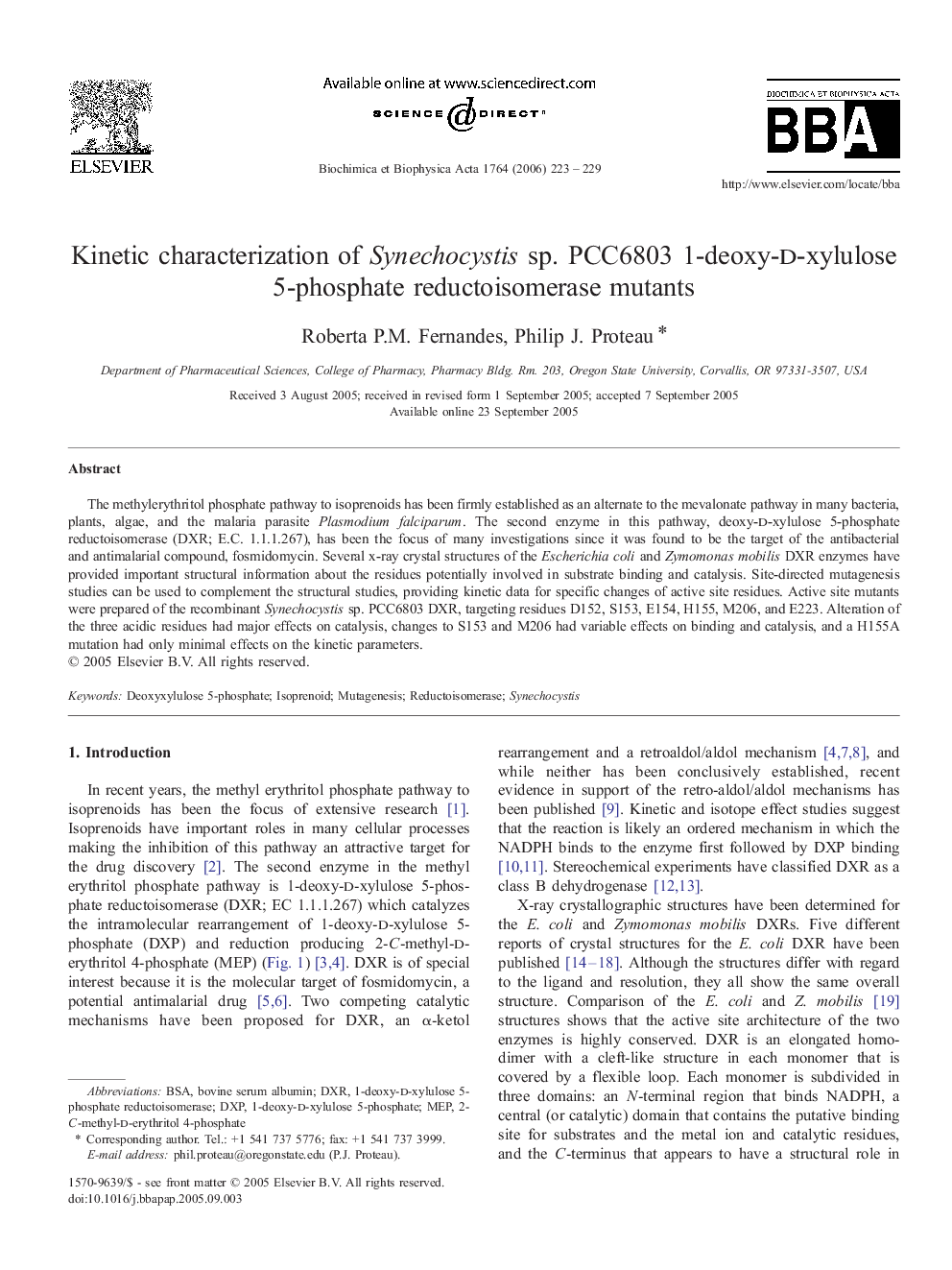| Article ID | Journal | Published Year | Pages | File Type |
|---|---|---|---|---|
| 1179600 | Biochimica et Biophysica Acta (BBA) - Proteins and Proteomics | 2006 | 7 Pages |
The methylerythritol phosphate pathway to isoprenoids has been firmly established as an alternate to the mevalonate pathway in many bacteria, plants, algae, and the malaria parasite Plasmodium falciparum. The second enzyme in this pathway, deoxy-d-xylulose 5-phosphate reductoisomerase (DXR; E.C. 1.1.1.267), has been the focus of many investigations since it was found to be the target of the antibacterial and antimalarial compound, fosmidomycin. Several x-ray crystal structures of the Escherichia coli and Zymomonas mobilis DXR enzymes have provided important structural information about the residues potentially involved in substrate binding and catalysis. Site-directed mutagenesis studies can be used to complement the structural studies, providing kinetic data for specific changes of active site residues. Active site mutants were prepared of the recombinant Synechocystis sp. PCC6803 DXR, targeting residues D152, S153, E154, H155, M206, and E223. Alteration of the three acidic residues had major effects on catalysis, changes to S153 and M206 had variable effects on binding and catalysis, and a H155A mutation had only minimal effects on the kinetic parameters.
